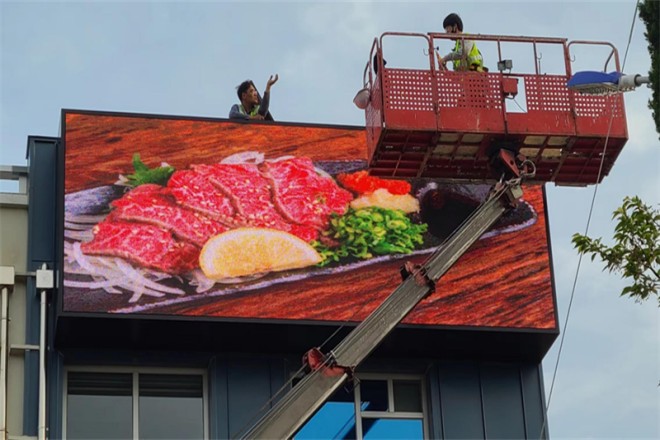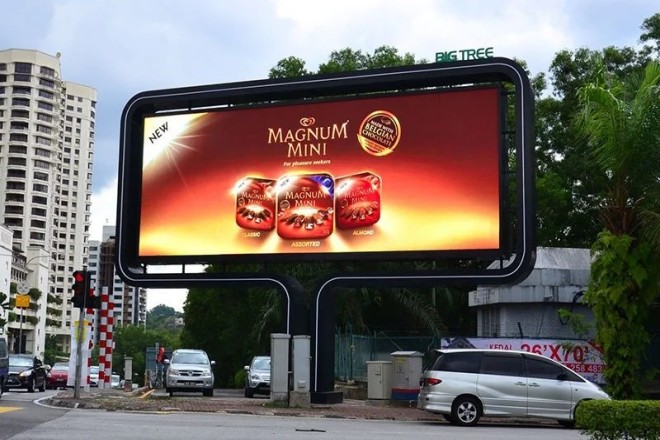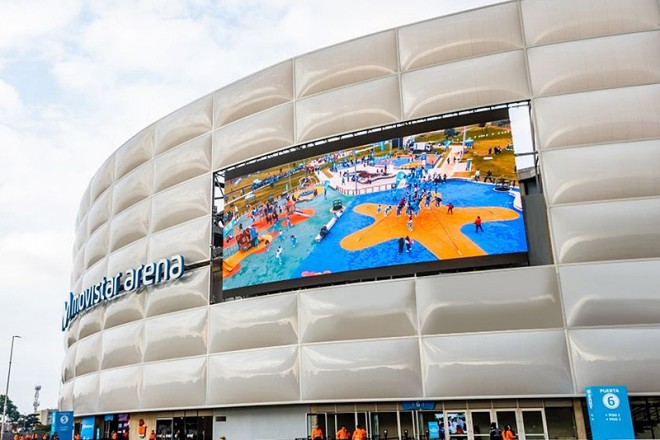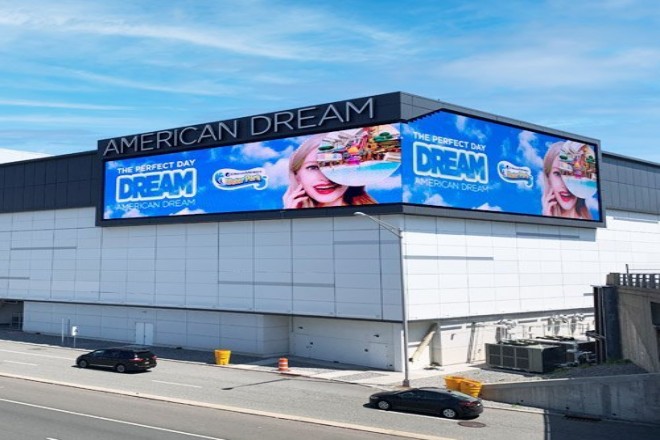소개

Today, as 발광 다이오드 표시 스크린 become increasingly popular, their display effect is not only related to hardware strength, but also to the meticulous installation details. Every detail is the key to determining whether the display screen can present information perfectly. So, which installation details can make the LED display screen more effective?
1. Installation site selection and environmental adaptability of LED display screens

1). Find a good location to make the display screen more dazzling
When installing an LED display screen, choosing a good location is like putting on a decent piece of clothing for the display screen, which can make it more dazzling. On different occasions, we have to find the most suitable “stage” for the display screen like a careful designer.
Indoor small world: If it is indoors, you have to find a place with soft light and a wide field of vision to make the content of the display screen clear at a glance. Also, be careful not to let direct sunlight or light shine on the screen to avoid reflections and make it unclear to the audience.
Outdoor adventure: When you are outdoors, things become much more complicated. You have to consider sunlight, rain, wind, and various weather changes. Therefore, you have to choose a place that can block the sun, rain, and wind so that the display can stand there steadily without being disturbed by the outside world.
The focus of the commercial area: If it is in the commercial area, the display must be the focus. Choose a location with a large flow of people and a conspicuous location, such as the entrance of a shopping mall or the corner of a pedestrian street, so that it can attract more people’s attention.
The passion of 스포츠 이벤트: In a gymnasium or stadium, the display must be able to cover the sight of the entire audience. Therefore, you must choose a suitable location and size according to the size of the venue and the layout of the audience seats so that the audience can clearly see the game information and exciting moments no matter where they sit.
2). Adapt to the environment and make the display more durable
In addition to finding a good location, the display must also be able to adapt to various environments. After all, it has to work in different weather and climate conditions, so it must have a certain “anti-strike” ability.
- Waterproof and dustproof, protect the display:
The outdoor display must be waterproof and dustproof, especially in places with a lot of rain and dust. Therefore, you must choose a display with a high waterproof and dustproof level, such as IP65/IP66, so that it can still be as solid as a rock in harsh environments.
- Temperature control makes the display screen more comfortable:
The display screen also needs a comfortable working temperature. Too high or too low will affect its performance and life. Therefore, according to the local climate conditions, suitable heat dissipation equipment, such as exhaust fans, air conditioners, etc., should be installed for the display screen.
It should also be noted that in particularly hot places, an intelligent temperature control system should be used to automatically adjust the working state of the heat dissipation equipment according to the ambient temperature so as to ensure the stable operation of the display screen and save energy.
In short, when installing the LED display screen, you have to be like a careful designer, comprehensively consider various factors, and find the most suitable “home” for the display screen. In this way, it can perform at its best in various environments and bring us a better visual experience.
2. Installation structure and fixing method of the LED display screen
1). Structural design:
When installing LED display screens, stability is the top priority. Imagine if a gust of wind makes the display screen shake, it would be too worrying.
Therefore, we have to use high-strength and corrosion-resistant materials, such as good quality steel or aluminum alloy, to create the installation frame. We also need to add beams and columns as “helpers” to protect the display screen.
Of course, we also have to respond flexibly to different scenarios and needs. For indoor use, you can use wall-mounted, ceiling-mounted, or embedded, which is both space-saving and beautiful.
For outdoor use, you have to use more “hardcore” column stacking and rotating bracket hanging. These designs are not only stable and durable but also allow the display screen to stand firm in all kinds of bad weather.
2). Fine calibration:
Installing an LED display screen is not as simple as putting the screens together. If you want the display screen to look like a whole, you have to perform fine calibration.
The installer has to use his or her best skills to ensure that the gaps between each display unit are as small and uniform as possible through precise measurement and positioning. This requires a bit of patience and carefulness, after all, a little error may affect the overall effect.
In addition to horizontal and vertical corrections, tilt correction and rotation correction must also be added. In this way, the display screen can present the best visual effect at any angle and distance. Just like taking a photo, you have to find the best angle to make the photo look more beautiful.
Finally, don’t forget to make fine adjustments. This is a critical moment to test the installation results. You have to carefully check the flatness of the display, the uniformity of the splicing gap, the consistency of the display effect, etc. If you find a little flaw, adjust it quickly until the best effect is achieved.
In short, installing an LED display is not a simple matter. You have to consider multiple aspects, such as stability, flexibility, and fine calibration. Only in this way can you ensure that the display can present the best display effect and user experience in various scenarios.
3. Tips for optimizing the power supply and signal transmission of LED display

1). Tips for power management
The power supply of the LED display is its “heart” and needs to be taken care of.
Tips for backup 전원:
We have to prepare a “backup heart” for the display-redundant power supply. In this way, if there is a problem with the main power supply, the display will not “strike” immediately.
When choosing a power supply, don’t forget to check its power and voltage and match it with the display’s needs.
Stable power supply method:
The power supply must be stable so that the display can live longer and be seen clearly. We have to stay away from those inferior power supplies. Otherwise, the display screen may have a “heart attack,” flashing, or even a “black screen” directly.
2). Tips for signal transmission optimization
Signal transmission is the “bridge” for LED display screens to show beautiful pictures.
Pick a high-definition transmission technology:
HDMI, DVI, optical fiber… These high-definition transmission technologies have their own advantages. For short-distance transmission, HDMI is quite convenient.
For high display effect requirements, DVI is more reliable; for large outdoor display screens or long-distance transmission, optical fiber is definitely the first choice.
Use signal equipment well:
Signal extenders, distributors, converters… These devices can help us solve major problems in signal transmission. But remember, when using them, you have to follow the rules, don’t let them become “accomplices” of signal attenuation and interference.
Regular inspection and maintenance are essential:
Power cords and signal cables, they are the “lifeline” of the display screen. We have to regularly check whether they are still strong, whether the voltage is stable, and whether the signal cable is damaged.
If problems are found, they must be dealt with quickly, and don’t let them become “hidden dangers” of the display screen.
In general, the power supply and signal transmission of LED display screens must be carefully cared for. Choose the right power supply, use the right technology, and check regularly so that the display screen can always be beautiful and bring us the best visual experience.
4. Practical tips for heat dissipation and ventilation design of LED display screens
1). Tips for heat dissipation design
The heat dissipation of LED display screens is like putting on a “breathable” piece of clothing for it, which is super important!
1.1). Internal heat dissipation expert:
냉각팬:This is the “small fan” of the display screen, which rotates whirringly to drive out the heat inside. When choosing, you have to choose one with fast speed, low noise and long life, so that it can work steadily all the time.
방열판:They are like the “heat dissipation coat” of the display screen, tightly attached to the heating components, absorbing all the heat. Both the material and design are critical, and you have to choose a good one to dissipate the heat faster.
1.2). External heat dissipation assistant:
Vent design: Open a few “small windows” on the outer shell of the display screen to allow air to enter and exit freely and take away the heat inside. The position and size must be just right to make the heat dissipation effect great.
Heat dissipation paint: This is a magical little thing. When applied to the display screen’s shell or heat sink, it can increase the heat dissipation area and improve efficiency. Moreover, it can prevent rust and corrosion, making the display screen more durable.
2). Tips on ventilation strategy
Ventilation design is like designing a “breathing system” for the display screen so that it can “breathe” smoothly.
- Ventilation path planning:
When designing the display screen, you have to consider the ventilation path, making it as short and straight as possible to reduce the resistance of airflow. You also have to avoid dead corners and blind spots to ensure that every corner can get sufficient heat dissipation.
When installing, you have to look at the environment around the display screen. If it is too closed, you have to open an opening on the wall or ceiling to allow air to circulate.
- Clean the heat dissipation system regularly:
Dust easily accumulates on the cooling fan and heat sink, so you have to clean it regularly. You can use a hair dryer or vacuum cleaner to gently blow away the dust, but be careful not to damage the fan and heat sink. You can also use a special heat dissipation cleaner to clean it to make the heat dissipation effect even better.
In general, the heat dissipation and ventilation design of LED display screens should be carefully considered, from design to installation to maintenance. In this way, the display screen can always work stably and provide us with better visual enjoyment.
5. Software debugging and optimization tips for LED display screens

1). Color correction:
If you want the color of the LED display screen to be as you wish, color correction is a big deal. You have to use professional color correction software, which is like putting on a precise “palette” for the display screen.
Get started with professional software: This software contains high-tech point-by-point correction technology, which can check each pixel one by one to ensure that the brightness and chromaticity of each point are just right. In this way, the color on the display screen can be highly consistent, looking more real and more moving.
A little secret of the correction process: First, professional equipment is used to collect data for each pixel; then, this data will be used to generate a unique correction coefficient matrix; finally, this matrix is like a “formula” that allows each pixel of the display screen to show its best state.
2). Brightness and contrast:
Brightness and contrast are the “light and shadow magicians” on the display screen, which can make the picture more layered.
Automatically adjust 명도: There is a “little eye” on the display – a light sensor, which can sense changes in the surrounding light and then automatically adjust the brightness. In this way, whether you are in bright daytime or dim night, the display can maintain the best visual effect.
Contrast optimization: Contrast is like the “darkness contrast” on the screen, which can make the image look deeper. When adjusting the contrast, you have to adjust it according to the actual situation, not too bright or too dark, just moderate. In this way, every detail on the screen can be clearly seen.
3). Playback content optimization:
Want to make your playback content more attractive? Then you have to work hard on resolution, frame rate and content editing.
해결 matching: It’s like finding a “good partner” for the display, ensuring that the resolution of the playback content is consistent with the resolution of the display so that the picture can be clear. High-definition videos and pictures with high-resolution displays are a perfect match!
Frame rate setting: The frame rate is like the “smoothness” of the picture, which determines whether the video looks coherent. Choose a suitable frame rate to make your video move more naturally and smoothly.
콘텐츠 편집 소프트웨어: With this professional software, you are like having a “magic wand” that can make static elements such as pictures and texts vivid and interesting. You can freely adjust the size, color, and position of the text and add various special effects and animations to the pictures to make your playback content more colorful.
결론
In summary, the installation details of the LED display are an indispensable element to achieve its excellent display effect.
From careful site selection to meticulous maintenance, every step carries the pursuit of a perfect visual experience. Looking to the future, we look forward to the continuous innovation of technology to bring more possibilities to LED displays.
마지막으로 LED 디스플레이에 대해 더 알고 싶으시다면, 우리에게 연락해주세요.
